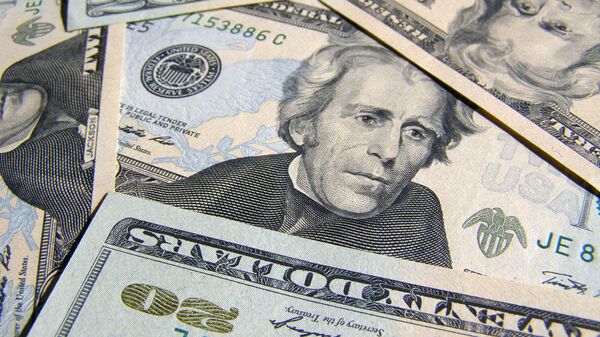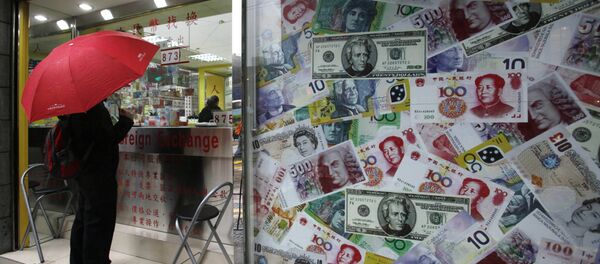Kristian Rouz – The US dollar posted its greatest gains in over thirty years during the past 12 months due to a combination of favorable domestic and alarming international factors.
The US national currency is booming against the basket of its peers as it has become a safe haven asset, along with precious metals and fixed income, for international investors.
The appreciation trend is poised to continue for the greenback, and while the US government will hardly be short of cash in the newly forming environment of an increased demand for the dollar and the Treasury notes, the consequences for the broader US economy are bleak.
Amidst the rife demand for US Treasuries, 10-year yield are sliding and are currently standing at 2.18%. US inflation, meanwhile, has dropped into the negative, retreating 0.1% in August from July, standing at 0.2% positive year-on-year.
Both the Treasuries and the dollar have gained amidst expectations of the US Fed tightening their monetary policy, while the global gloom also supported their gains as other central banks devalued their currencies, and investors fled emerging markets for the US, among other destinations. A stronger dollar, while impairing US inflation, also has a negative effect on US corporate earnings, battering profitability of overseas operations of America’s biggest enterprises. While the US manufacturing is coming home at an insufficiently fast pace, billions of dollars in profits are lost in vain.
The dollar is currently just 8% below its all-time highest, according to the US Fed, having climbed 18% against its major peers over the past year.
While the regulator might further postpone monetary tightening, the very expectation of the Fed policy move fuels global demand for the dollars. The US is thus facing a threat of severe imbalance in its international trade as a stronger dollar favors importers. This is not a big issue: Washington has been in a similar situation in 1984, when the Plaza Accord was signed between the US, the UK, Germany, France and Japan in order to keep the greenback from strengthening.
To make things worse, while the global trade imbalance deepens, the Chinese economic slowdown, attributed to the waning factory-gate demand for industrial goods, continues. The global economy has entered a massive overproduction crisis. That said, the US Federal Reserve may or may not raise its base interest rate: in a global crisis situation investment capital flow into the safest assets, like the greenback.
As the strife for competitiveness, resulting in a currency war, currently led by Japan, the Eurozone, mainland China and many emerging markets, gradually undermines global growth outlook, the US regulator is heading for a normality in its monetary policies. The most recent G20 meeting in Turkey failed to address the Chinese slowdown and the global wave of currency devaluations, meaning even if the US Fed reversed their monetary policy and enacted the full-scale QE over again, the dollar would not have weakened: international demand is too huge.
The best the Fed could do to at least slightly weaken the dollar is to actually hike the US borrowing costs: markets buy the expectation, but usually sell the news. A market sell-off in dollars would spur US inflation enough for the economy to adapt to the new monetary policy environment at least.






